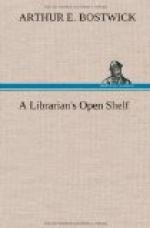A paper in which a discontinuous or “atomic” structure of energy was suggested was prepared by the present writer fifteen years ago but remains unpublished for reasons that will appear later. Although he has no desire to put in a claim of priority and is well aware that failure to publish would put any such claim out of court, it seems to him that in connection with present radical developments in physical theory the paper, together with some correspondence relating thereto, has historical interest. Planck’s theory was suggested by thermodynamical considerations. In the paper now to be quoted the matter was approached from the standpoint of a criterion for determining the identity of two portions of matter or of energy. The paper is as follows:
Some Consideration on the Identity of Definite Portions of Energy
It has been remarked recently that physicists are now divided into two opposing schools according to the way in which they view the subject of energy, some regarding it as a mere mathematical abstraction and others looking upon it as a physical entity, filling space and continuously migrating by definite paths from one place to another. It may be added that there are numerous factions within these two parties; for instance, not all of those who consider energy to be something more than a mere mathematical expression would maintain that a given quantity of it retains its identity just as a given quantity of matter does. In fact a close analysis would possibly show that opinions are graded very closely and continuously from a view hardly differing from that of Lagrange, who clearly saw and freely used the mathematical considerations involving energy before the word had been invented or its physical meaning developed, up to that stated recently in its extreme form by Professor Ostwald, who would replace what he terms a mechanical theory of the universe by an “energetical” theory, and would dwell exclusively on energy as opposed to its vehicles.
Differences of opinion of this sort very frequently reduce to differences of definition, and in this case the meaning of the word “identity” or some similar word or phrase has undoubtedly much to do with the view that is taken of the matter. It may be interesting, for instance, to look for a moment at our ideas of the identity of matter and the extent to which they are influenced by the accepted theory of its constitution.
Very few persons would hesitate to admit that the matter that now constitutes the universe is identical in amount with that which constituted it one million years ago, and that any given portion of that matter is identical with an equal amount of matter that then existed, although the situations of the parts of that portion might be and probably were widely different in the two classes. To assert this is of course a very different thing from asserting that the identity of the two portions or any parts thereof could have




